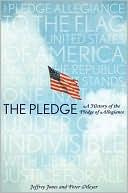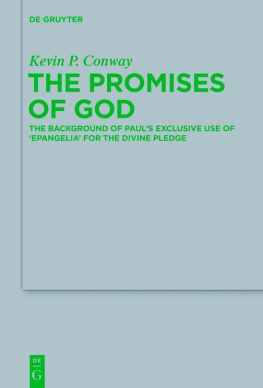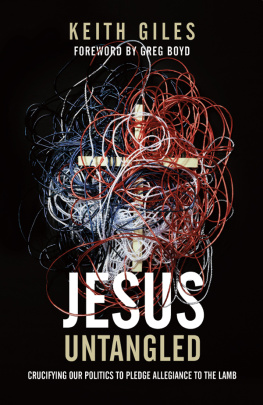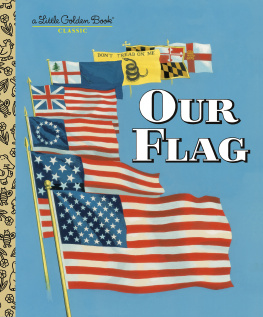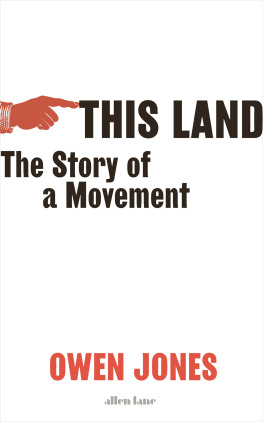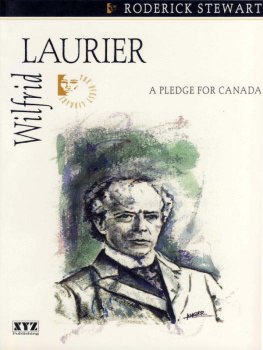The Pledge

ALSO BY PETER MEYER
The Yale Murder
Death of Innocence
Dark Obsession
THE PLEDGE

A HISTORY OF THE PLEDGE OF ALLEGIANCE
Jeffrey Owen Jones
and Peter Meyer

THOMAS DUNNE BOOKS
ST. MARTINS PRESS
NEW YORK
THOMAS DUNNE BOOKS.
An imprint of St. Martins Press.
THE PLEDGE. Copyright 2010 by Jeffrey Owen Jones and Peter Meyer. All rights reserved. Printed in the United States of America. For information, address St. Martins Press, 175 Fifth Avenue, New York, N.Y. 10010.
www.thomasdunnebooks.com
www.stmartins.com
ISBN 978-0-312-35002-4
First Edition: October 2010
10 9 8 7 6 5 4 3 2 1
TO JEFFREY OWEN JONES,
WHO LOVED A GOOD STORY
CONTENTS
ACKNOWLEDGMENTS
While I am, and always will be, saddened that Jeff did not live to finish this book, I feel honored to have played a role in its completion and know Jeff would have been proud of it.
I would like to thank The Smithsonian for publishing Jeffs article on the Pledge of Allegiance.
Many thanks to the University of Rochester Library in whose archives reside the papers of Francis Bellamy.
To John Ware, who understood, coached, and supportedmany, many thanks.
To Thomas Dunne and Peter Joseph of St. Martins Press, I thank you for picking up the reins and continuing the project. I thank you doubly for your wisdom in hiring Peter Meyer. Thanks to Peter Meyer for taking up the reins and riding (or writing) to the finish line.
I owe a debt of gratitude to Christopher and Hilda Jones. Your love and support kept this project afloat.
My thanks to Peter Richardson and Steve Atlas, who, by example, define friendship and loyalty.
My deepest personal thanks go to our Pittsford team of angels: Dr. Dave Trawick and Dr. Becky Monk, Dr. Steve Ignaczak and Dr. Judy Kramer, Dr. Steve Meyers and Dr. Barbara Weber, Dr. Margaret Donahue, and Dr. Victor and Mrs. Susan Regenbogen, Dr. T. Scott Campbell, Dr. Timothy Quill and Dr. Aaron Olden. By surrounding us with your expertise, empathy, and humanity, you kept our spirits high.
Thank you to Denise DeWyn for keeping the office under control.
And thank you to our son, Eli Owen Jones, for lighting up our lives.
ELLEN JONES
My thanks must start with Thomas Dunne, who invited me to get involved with this project; as a student of history, I jumped at the opportunity to learn about the Pledge of Allegiance, but I had no idea the subject was so rich. Of crucial help in my research were colleagues and friends Donald Christensen, Lynn Sloneker, Jacques Menasche, and Catherine Corenowithout their hugely generous and professional assistance this book would not have been possible. Also crucial to the telling of any story about the Pledge of Allegiance were the staff of the Department of Rare Books, Special Collections and Preservation at the Rush Rhees Library at the University of Rochester, where a treasure of historical documents are available (see the Bibliography); my special thanks to Rosemary Switzer and Melissa Mead at Rush Rhees. And I also reserve a special debt of gratitude to Ellen Jones, who showed so much grace and kindness in helping me gather up the files of her late husband, the author of this book. I am sorry I never met Jeffrey Owen Jones, but when I heard that he was the Mr. Jones in the song of my favorite poet Bob Dylan, I knew I would have liked him. And I only hope I have done some justice to Jeffreys superbly easy and inviting writing style in finishing a project to which he devoted much personal and professional love and attention. Finally, my great thanks to Peter Joseph, an editor of immense talent and patience. And, needless to say but needful of saying, a special thanks to my wife, Janet, and son, Dylan, who put up with the many inconveniences of necessary deadlines.
PETER MEYER
1. AN AMERICAN RITUAL
On a sultry summer evening in Boston in the year 1892, a thirty-seven-year-old former clergyman named Francis Bellamy sat down at his desk in the offices of a popular family magazine where he worked and began to write:
I pledge allegiance to my flag...
Neither Bellamy nor anyone else could have imagined that the single twenty-three-word sentence that emerged would evolve into one of the most familiar of patriotic texts and, based on student recitations alone, perhaps the most often repeated piece of writing in the history of the English language. A standard ritual of childhood for most native-born citizens and a regular practice for many adults, reciting the Pledge of Allegiance is so deeply embedded in American life that it is natural to believe that the text came from on high, or that it bubbled up spontaneously from the fruited plain, far back in our history. Before I heard, a few years ago, about Francis Bellamy and the writing of the Pledge, I had never stopped to think how or where it had originated. The Pledge of Allegiance had just always been there. It never occurred to me that a person had actually composed it. If I thought about the Pledge being written at all, I dimly pictured a man in a white wig with a quill pen, or a dashing figure in a ruffled shirt on the deck of a frigate, bombs bursting in air.
But no. As it turns out, the Pledge wasnt scratched on parchment in the mists of time. It came to life not that long ago, very near the beginning of the twentieth century. And the birth of the Pledge was more prosaic than heroic. It wasnt chiseled in granite or penned in blood on a battlefield. It was scribbled on scrap paper by Frank Bellamy, a guy stuck at the office on a hot summer night.
It is amusing to play historical voyeur and look back on Bellamy hunched over his desk jotting drafts on the back of an old office form. It must have seemed to him a very ordinary moment in time. There was, of course, no way for him to know that he was writing for the ages, that the words he was scribbling on deadline would spring from the lips of generations of Americans long after he was dead and gone. Never could he have conceived that in the twenty-first century multitudes of children all over the United States would begin every school day reciting his words (though somewhat altered by textual fiddling over the years). Nor could he have guessed that the flag salute he was composingfor an event that was part patriotic celebration, part promotion for the magazine that employed himwould find such a variety of uses in American life.
Today, in addition to marking the official opening of every school day for millions of students (even some homeschoolers recite it), the Pledge of Allegiance has become a ceremonial must for all occasions. Committees, councils, and legislaturesfrom PTAs and zoning boards to the U.S. Congressintone the Pledge at the start of every session. Rotary, Elks, Lions, Kiwanis, Cub Scouts and Girl Scouts, American Legion, Daughters of the American Revolution (DAR), Knights of Columbus, Bnai Brith, and scores of other clubs, societies, and associations open every meeting with the Pledge. It is recited at graduations and county fair openings, at groundbreaking ceremonies and monument dedications, at professional conventions, football games, and stock car races. It is spoken in a blended chorus of accents from around the world by newly sworn American citizens. In times of war and in times of economic distress, saying the Pledge can be a kind of incantation to express solidarity and to ward off evil.
Thinking back on the evening when he wrote the Pledge, Francis Bellamy said later in life that he intended to create a vehicle for expressing intelligent patriotismnot only love of country but, just as important, awareness of the nations ideals. Bellamy also said that, with the Civil War still very much in living memory and waves of immigrants arriving on American shores, he intended the phrase one nation indivisible (as he originally wrote it) to stand as a strong affirmation of national unity.
Next page
